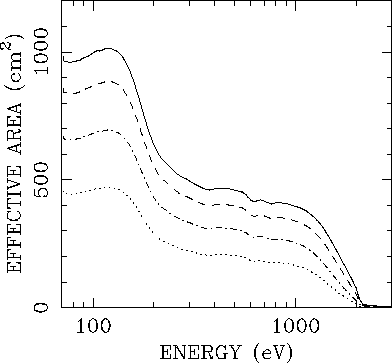
Figure 2.5: The effective area of the ROSAT XMA as a function of energy for (from top to bottom) off-axis angles 0, 20, 40, & 55' [Aschenbach1990b, Aschenbach1990a]
| About ROSAT |
ROSAT Home Page | ROSAT Images |
|---|

Figure 2.5: The effective area of the ROSAT XMA as a function of energy
for (from top to bottom) off-axis angles 0, 20, 40, & 55'
[Aschenbach1990b, Aschenbach1990a]
The area of the ROSAT XMA as a function of energy is shown in Fig. 2.5 for on axis and several off-axis angles. The reduction in the areas due to obstruction by the telescope support structure (Sect. 2.1.1) have been included. It can be seen that, besides the various edges due to gold, the area of the XMA is fairly constant as a function of energy in the 0.3-1 keV band.
Between 1.0 and 1.7 keV, the telescope has been calibrated on ground and compared with predictions using tabulated optical constants. Up to 1.7 keV, the highest X-ray energy available as X-ray line used in the calibration, the agreement is satisfactory. Beyond that energy, optical constants are not available and a comparison cannot be made.
The fall-off beyond 1 keV is because reflection efficiency is a function of energy and the angle required to focus the photons decreases with increasing X-ray photon energy. The steep rise below 0.2 keV is due to the optical characteristics of gold.